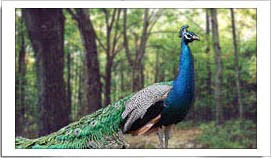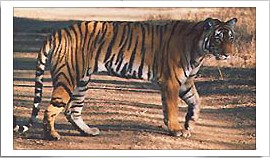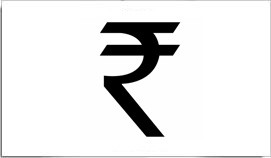General Facts and History
- The nation of India is today both the second most populous country and the largest democracy in the world. Located in the heart of South Asia, India’s natural borders include the Indian Ocean, the Bay of Bengal, and the Arabian Sea. Its modern political borders are with China, Pakistan, Nepal, Bhutan, Burma, and Bangladesh (“World Factbook,” n.d.).
- India has a long and colorful history dating back to ancient times, when the Indus Valley civilization first flourished around 2500 BCE. For centuries thereafter, India came to be ruled by a series of tribes, dynasties, and empires, with some of the most prominent being the Maurya Empire, the Gupta Dynasty, the Delhi Sultanate, and the Mughal Dynasty. A prominent shift in Indian history occurred with the arrival of European explorers in the 16th century, who gradually seized power over the subsequent years. The British Empire eventually controlled much of the country by the 18th century (“Know India,” 2016). Rule under the British crown went on for nearly two centuries, until a non-violent movement championed by revered Indian figures Mahatma Gandhi and Jawaharlal Nehru led to Indian independence on August 15, 1947 (August 15 is now India’s independence day).
- The empire was replaced with a secular and democratic republic, complete with an executive, legislative, and judicial branch. This modern system has successfully remained in place to this day, and India’s current prime minister is Narendra Modi (“World Factbook,” n.d.).
- FACT: National Flag Colors- Deep Saffron, White, Dark Green, and a Dark Blue Wheel
The India-Pakistan Problem
India’s transition to independence was anything but clean, as disagreements between different governing factions led to the bloody partition of British India into modern India and Pakistan. This partition displaced millions of individuals, and conflict between Hindus and Muslims led to acts of horrific violence and thousands of deaths (Dalrymple, 2015). In the years since, the India (Hindu majority)—Pakistan (Muslim majority) relationship has been fraught and uneasy. Tensions have come to boiling point over the development of nuclear weapons by both nations and multiple wars disputing the territorial control of the northern Indian region of Kashmir. Even today, India retains a strained relationship with Pakistan, and the years of division and conflict have made it a delicate topic likely to incite passions and fears (“World Factbook,” n.d.).
FACT: National Bird- Indian Peacock
Government/Economy
Since its creation in 1947, modern democratic India has seen both success and failure. This dual record can be captured by looking at India’s government and economy. The fact that the nation has maintained its democratic setup for almost 70 years is no small feat, especially considering its incredibly large population and its myriad cultures and religions (“Know India,” 2016). Despite this, corruption remains a significant problem in India, with allegations of bribery, laundering, and financial mismanagement ever-present in the news (“Bad boom,” 2014).
India’s economy, meanwhile, is also quite varied, with both a strong agricultural component and a rapidly growing service industry focusing on software and telecommunications. The latter has led to an emerging middle class that wields significant power and can enjoy the benefits of urban life (“World Factbook,” n.d.). Indeed, India is today one of the world’s most rapidly growing economies, driven by continued modernization, global integration, and a young workforce. On the flip side, economic inequality remains rampant, with slums and ghettos regularly found near cities and apartments. While those in the higher classes generally enjoy an excellent education, those of lower income often have severely limited educational opportunities. This means India faces significant challenges in the coming years as it attempts to keep up its economic growth and extend the fruits of that growth to those on the lower rungs of the socioeconomic ladder (Agrawal, 2016).
FACT: National Animal- The Magnificent Tiger
Culture/Society
India has a rich culture that remains one of the world’s most vibrant and diverse. The nation has 29 recognized states and 23 recognized official languages, including English (English remains a commonly spoken language throughout India, and the majority of educated Indians know at least some basic English). However, the total number of local languages and dialects spoken could actually number over one thousand! Out of these, the most commonly spoken language is Hindi(“Languages,” n.d.). The most common religion is Hinduism, with Islam, Sikhism, and Christianity all prominent minority religions. Indian culture is likewise a blend of different customs and festivals, with common staples including classical dance and traditional music performances. The largest Indian festival is Diwali, or the Festival of Lights. Another well-known Indian festival is Holi, or the Festival of Colors. Indian cuisine is just as varied and complex as the other aspects of the nation’s culture. Though a large portion of the population is vegetarian, non-vegetarian dishes are also common and well-known. Additionally, India is renowned for its art and architecture, with the Taj Mahal being a prime example. Overall, India’s rich and diverse culture is magnificent to behold and one of the country’s best traits (“Know India,” 2016).
FACT: National Currency: The Rupee
Conclusion
As I embark on my internship this summer, I will be coming into a dynamic country with a bright culture and plenty of potential for future growth. However, there are also a number of issues that I must be aware of during my travels, such as the India-Pakistan divide and the rampant corruption and economic inequality. Overall, this snapshot of India aptly captures what I will be running into. I will be able to enjoy the cultural diversity and appreciate the fast growth, but I will also need to be on guard against delicate and controversial topics and the realities of corruption and poverty.
FACT:
Bollywood Refers to the Hindi Language Film Industry. Tollywood-Telugu Films. Kollywood- Tamil Films. Mollywood- Malayalam Films.




